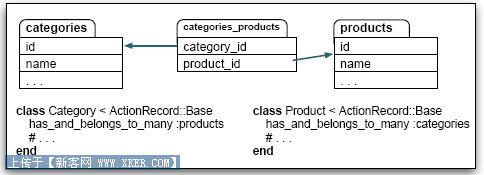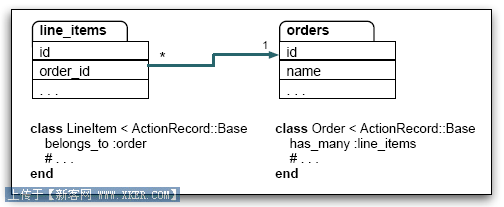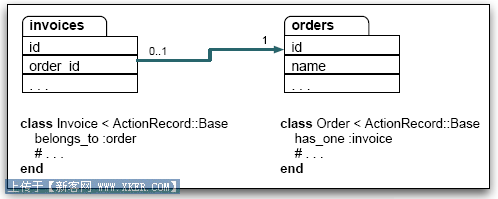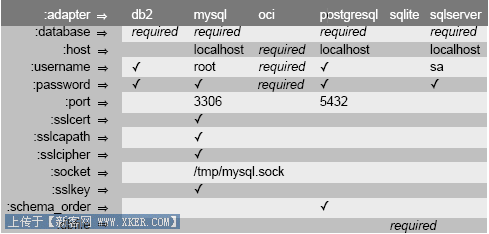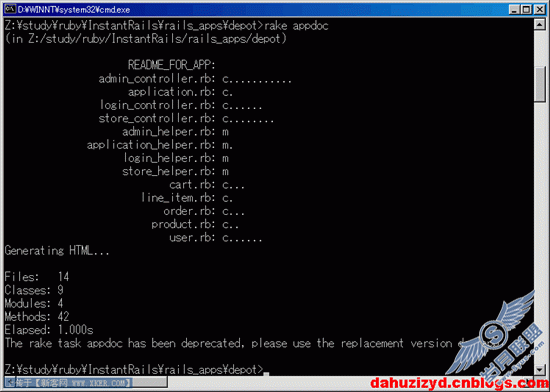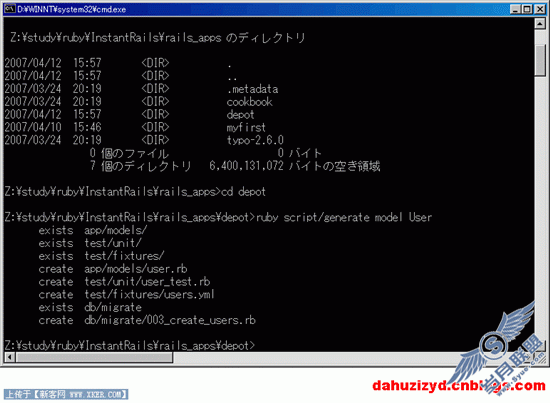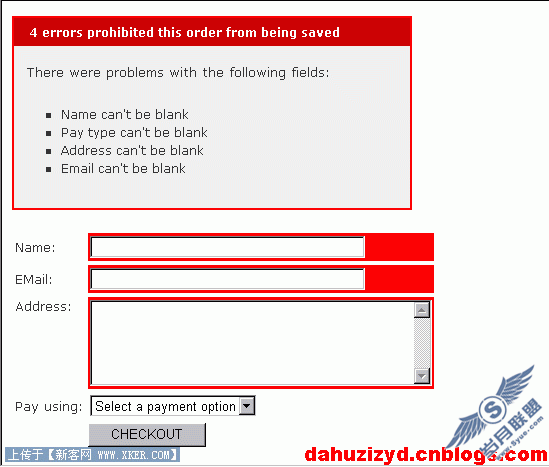Ruby on rails开发从头来(windows)(二十一)-测试Model时的问
上次测试Modeul的问题还没有解决,但是下面的还要继续,这次来测试Controller。
1. 在testfunctional目录下,rails已经为我们的controller生成了对应的测试文件,要注意application_controller不会生成测试文件。我们以控制登录的LoginController为例,打开login_controller_test.rb,内容如下:
require File.dirname(__FILE__) + '/../test_helper'
require 'login_controller'
# Re-raise errors caught by the controller.
class LoginController; def rescue_action(e) raise e end; end
class LoginControllerTest < Test::Unit::TestCase
def setup
@controller = LoginController.new
@request = ActionController::TestRequest.new
@response = ActionController::TestResponse.new
end
# Replace this with your real tests.
def test_truth
assert true
end
end
我们看到,在setup方法里,定义了三个对象@controller和@request和@response,这样,我们就可以在不接入webserver或network的情况下进行测试了。
2. 我们来把其中的test_truth方法替换成下面的代码:
def test_index
get :index
assert_response :success
end
其中,get方法模拟发出一个web请求,请求的action是index,并且捕捉响应(response),然后由assert_response断言来判断响应是否成功。
现在运行测试:depot>ruby test/functional/login_controller_test.rb
会看到测试失败了,命令行的输出:
Expected response to be a <:success>, but was <302>
1 tests, 1 assertions, 1 failures, 0 errors
为什么会这样呢?回想一下,我们在前面的程序里,在访问index页面时,要先判断用户是不是管理员。如果不是,就要跳转到login页面,在login_controller.rb里:
before_filter :authorize, :except => :login
在application.rb文件里,有authorize方法:
def authorize
unless session[:user_id]
flash[:notice] = "Please log in"
redirect_to(:controller => "login", :action => "login")
end
end
3. 好了,知道了原因,现在再写一个测试:
def test_index_without_user
get :index
assert_redirected_to :action => "login"
assert_equal "Please log in", flash[:notice]
end
上面的代码里,我们尝试请求index这个action,并且使用断言判断是否重定向到login,再判断flash[:notice]里的内容。
再次运行测试,命令行的输出如下:
Loaded suite test/functional/login_controller_test
Started
.
Finished in 0.062 seconds.
1 tests, 3 assertions, 0 failures, 0 errors
可以看到所有的断言都通过了。
但是还有一个问题,就是根据代码,我们只使用了两个断言,但是提示信息却显示有三个断言,这个问题是什么原因还不太清楚,但是现在并不影响我们继续下面的内容。
4. 在我们的login页面上,用户输入名字和密码后,点击login按钮,这些信息将会发送个login这个action,然后创建一个User的实例来让用户登入。
在login_controller.rb里的login方法里:
@user = User.new(params[:user])
logged_in_user = @user.try_to_login
现在,我们来测试login这个action,在login_controller_test.rb中添加方法:
def test_login_with_invalid_user
post :login, :user => {:name => 'fred', :password => 'opensesame'}
assert_response :success
assert_equal "Invalid user/password combination", flash[:notice]
end
大家一定看到了,这是使用了一个不存在的用户名和密码来测试login。
运行测试,输出结果如下:
Finished in 0.609 seconds.
2 tests, 5 assertions, 0 failures, 0 errors
和上一个测试方法相对的,这里代码里是两个断言,根据输出也是两个,挺奇怪的事情。
5. 测试了不存在的用户,现在我们来测试用户存在的情况。
修改fixtures目录下的users.yml文件,我们还使用上面的用户名和密码:
# Read about fixtures at http://ar.rubyonrails.org/classes/Fixtures.html
fred:
id: 1
name: fred
hashed_password: <%= Digest::SHA1.hexdigest('abracadabra') %>
然后给login_controller_test.rb添加fixtures :users,指定使用users.yml文件。
再添加方法:
def test_login_with_valid_user
post :login, :user => {:name => 'fred', :password => 'abracadabra'}
assert_redirected_to :action => "index"
assert_not_nil(session[:user_id])
user = User.find(session[:user_id])
assert_equal 'fred', user.name
end
在这里方法里,我们指定了和yml文件中定义的用户名相一致的数据,并且判断是否定位到index,再判断用户的id是否已经保存在session中。
根据前面测试Model时候的内容,我们在yml文件中定义的数据会被加入到数据库中,这样,这个方法里的三个断言都应该通过才对。
OK了,运行测试,输出结果:
Finished in 0.125 seconds.
3 tests, 8 assertions, 0 failures, 0 errors
嗯,所有的断言都通过了。
好了,这次就到这里。
